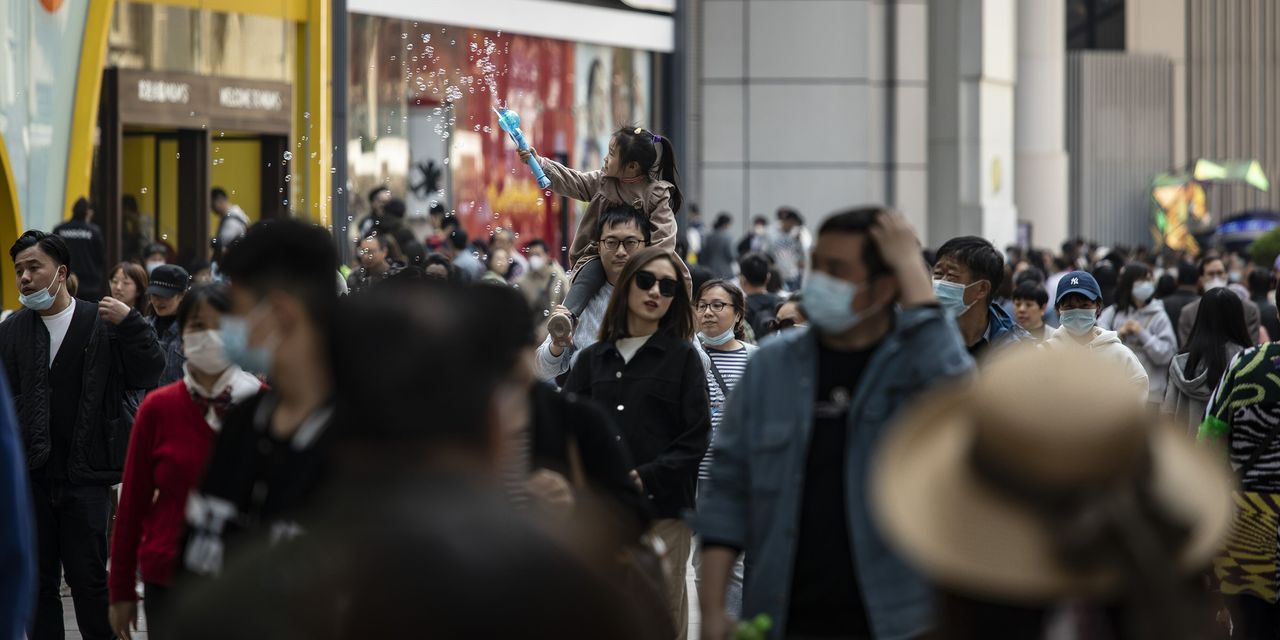As evidence mounts that China’s economy is in worse shape than previously thought, a particularly unwelcome detail is emerging.
Domestic spending, which economists hoped would compensate for weakness in traditional growth areas such as manufacturing and exports, isn’t going to revive China’s deflated recovery any time soon.
New data show just how deflated that short-lived recovery was. China emerged from its Covid hibernation and ushered in a first quarter of robust growth across a range of sectors. But by April, key areas showed weakening. In the months since, nearly all major metrics have worsened.
Investors were hoping this week’s data would show that to be a blip in a revival that just needed time to get on its feet. Instead, there was disappointment across the board.
Factory output, retail sales, property prices, fixed-asset investment, and youth unemployment all worsened for May beyond economists’ forecasts, according to data released last week by China’s National Bureau of Statistics.
To many, the most damning underperformance was for retail sales, a gauge of domestic consumption. Growth in the sector shrank to 12.7% year over year from April’s 18.4%, below consensus forecasts. Looked at monthly, the absolute value of retail sales has fallen consistently since December.
Retail sales were “the only functioning engine of Chinese growth,” Robert Carnell, head of Asia-Pacific research for ING, said in a note Thursday. “The reopening momentum is falling.” He noted that catering and vehicle sales were the only bright spots, but that “very little else is showing much signs of life, including consumer confidence bellwethers like clothing.”
This weak domestic spending is worrisome for a range of reasons. China’s traditional methods of stimulating growth, such as massive infrastructure projects and boosting exports, may be less effective now than ever.
A country saturated with new airports, highways and bridges from years of massive government projects is in little need of further investment. Moreover, the bills for these projects often fall on debt-laden local governments.
Meanwhile, manufacturing and exports, drivers of China’s decades of explosive growth, are suffering from weak demand globally, something out of Beijing’s control. Inflation and risk of recession are hitting places like Europe and other importers of Chinese goods. China’s exports shrank 7.5% year-over-year in May, the biggest decline since January, and will likely fall further before bottoming out toward the end of the year, Julian Evans-Pritchard, head of China economics at Capital Economics, said in a recent report.
Another problem for policy makers is that Chinese consumers aren’t short of cash, they are just reluctant to spend it. Measurements of money flowing through the economy show that consumers have ample assets and currency, but these are largely being saved instead of circulating in economically productive ways.
Multiple factors explain China’s consumption problem. The notoriously spendthrift cohort of younger Chinese are now facing the highest rate of joblessness ever recorded for their 16-24 age range. For the rest of the working-age population, the unemployment rate is at a reasonable 5%, but these older consumers lack confidence in China’s economy and financial security, according to official surveys and interviews with consumers.
“There seems to be a persistent lack of confidence among consumers, home buyers, corporates and investors,” Citibank analysts wrote in a report. Even worse, “weak expectations could be reinforcing each other and become entrenched and self-fulfilling.”
China’s consumer problem is rarely the focus of stimulus prescriptions, and when it is, policies are often ineffective. Unlike in the West, where many governments transferred cash to consumers as part of broader stimulus packages, China has largely relied on encouraging banks to lend. But making it easier to get a loan does little for consumer confidence.
“Until there is a real attempt to increase the share of GDP retained by households, consumption will still remain too weak to drive growth rates beyond a few months,” economist Michael Pettis told Barron’s.
Consumption is also tied to China’s property market, which accounts for a quarter of GDP and 70% of household wealth, according to government statistics—a far larger share than in most countries.
After years of white-hot growth, with analysts awaiting a massive bubble burst, prices began falling during the pandemic. New homes sales dropped 28% in 2022. Prices briefly rose as other major sectors improved in this year’s fleeting recovery blip, but began to fall again as the revival deflated.
With so much personal wealth tied up in property, price fluctuations have massive effects on spending.
Mark Tanner, managing director of Shanghai-based consumer consultancy China Skinny, said property may be more important than wages in driving consumer spending.
“This is why you’ll see consumers earning $1,000 a month spending four times that on a handbag or buying an expensive iPhone. It was a reassurance that consumer debt would be irrelevant versus the rising value of one’s house. But the recent, prolonged halt to growth has been a wake-up call for many,” he told Barron’s.
This week’s numbers have ratcheted up nervousness not only among investors and economists. Policy makers are now planning what could be among Beijing’s biggest stimulus packages, The Wall Street Journal reported.
But from what we know so far, direct measures to boost consumer spending remain footnotes at best.
Write to [email protected]
Read the full article here


